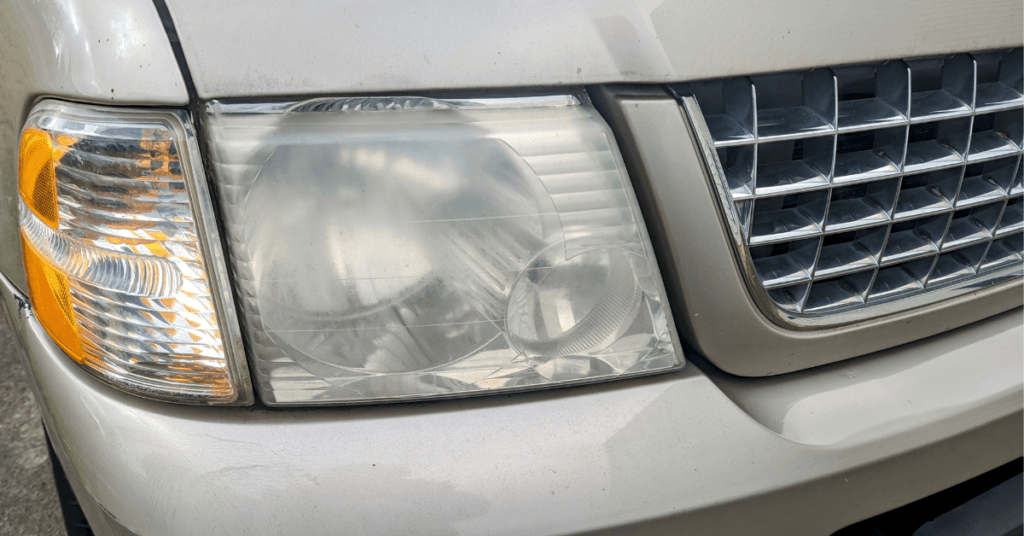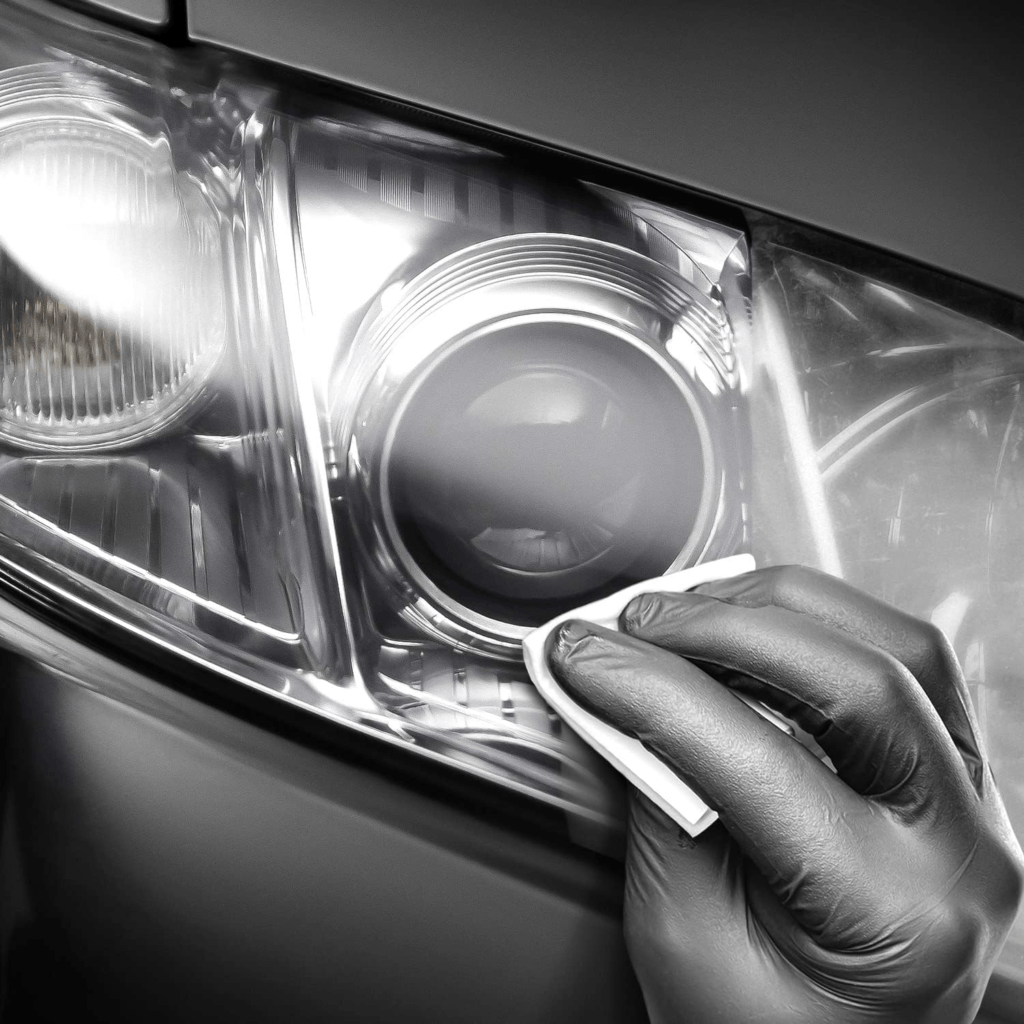Shine Bright Again: The Ultimate Guide to Headlight Restoration and Plastic Headlight Care.

Headlights are an essential component of any vehicle, ensuring safety and visibility on the road. However, over time, they can become dull, cloudy, and even yellowed, reducing their effectiveness and diminishing the overall appearance of your car. The good news is that you don’t have to live with dull headlights or spend a fortune on replacements. In this ultimate guide to headlight restoration and plastic headlight care, we will take you through the step-by-step process of restoring your headlights to their former glory. From understanding the causes of headlight damage to choosing the right restoration products and techniques, we will provide you with all the knowledge and tips you need to shine bright on the road once again. Don’t let faded headlights dim your driving experience – let’s dive in and discover the secrets to achieving crystal-clear headlights and preserving their clarity for years to come.
Understanding the causes of headlight damage
Understanding the causes of headlight damage is crucial in maintaining the longevity and performance of your vehicle’s headlights. Over time, headlights can become hazy, yellowed, or foggy, which not only diminishes their appearance but also affects their functionality.
There are several factors that contribute to this deterioration. One common cause of headlight damage is prolonged exposure to the sun’s harmful UV rays. The sun’s rays oxidize the polycarbonate lens, causing it to become discolored and cloudy. This not only reduces the amount of light emitted from the headlights but also hampers visibility while driving at night.
Another factor that contributes to headlight damage is environmental factors such as dirt, debris, and road grime. These elements can accumulate on the surface of the headlight lens, creating a layer of film that obstructs the light output. Additionally, harsh weather conditions like rain, snow, and hail can cause scratches, pitting, and cracks on the lens, further diminishing its clarity and effectiveness. Chemical exposure is also a significant cause of headlight damage. Certain chemicals found in car wash soaps, cleaning agents, and even bug repellents can react with the polycarbonate material of the headlight lens, leading to discoloration and deterioration.
Lastly, minor collisions and impacts can cause damage to the headlight housing, resulting in cracks or chips on the lens. These damages not only compromise the structural integrity of the headlight but also allow moisture to seep in, leading to condensation build-up inside the lens. Understanding these causes of headlight damage is the first step in taking proactive measures to restore and maintain the clarity and functionality of your headlights. By addressing these issues, you can ensure that your headlights shine bright again, providing optimal visibility and enhancing the overall aesthetic appeal of your vehicle.
Choosing the right restoration products and tools
When it comes to restoring your headlights and caring for plastic headlights, choosing the right products and tools is crucial. With so many options available, it can be overwhelming to know where to start. First and foremost, you want to ensure that the products you choose are specifically designed for headlight restoration.
Look for kits that include a cleaner or polish, as well as a protective sealant. These products are specially formulated to remove oxidation, haze, and yellowing from the surface of your headlights, restoring their clarity and brightness. When it comes to tools, there are a few essentials you’ll need.
A soft microfiber cloth is ideal for applying the cleaner and polish, as it won’t scratch or damage the plastic surface. Additionally, a sponge or foam applicator can be helpful for evenly distributing the products. If you prefer a more hands-on approach, consider investing in a headlight restoration kit that includes sandpaper or abrasive pads. These tools are designed to gently sand away the surface imperfections before applying the cleaner and polish.
However, be cautious when using these tools, as excessive pressure or improper technique can lead to further damage. It’s also worth mentioning that some restoration products may require the use of a power drill or buffing machine. If you’re comfortable using these tools, they can help to speed up the restoration process and achieve optimal results. However, if you’re not confident in your abilities, it’s best to stick with manual methods to avoid any accidental damage.
Ultimately, choosing the right restoration products and tools is essential for achieving professional-level results. Take the time to research different brands and read customer reviews to ensure you’re selecting products that are effective and reliable. With the right materials in hand, you’ll be well on your way to bringing back the shine and clarity to your headlights.
Step-by-step guide to headlight restoration

If you’ve noticed that your headlights are starting to look dull, hazy, or yellowed, it’s time to give them some TLC with a headlight restoration. Restoring your headlights not only improves their appearance but also enhances your safety while driving at night. Fortunately, with the right tools and a step-by-step process, you can easily bring back their shine and clarity.
Step 1: Preparation Start by thoroughly cleaning your headlights with a mild soap or car cleaner and water. Use a sponge or soft cloth to remove any dirt, grime, or debris. Once clean, dry the headlights completely before moving on to the next step.
Step 2: Masking To protect the surrounding areas of your headlights, apply masking tape around the edges, creating a barrier between the headlight lens and the adjacent surfaces. This will prevent any accidental damage during the restoration process.
Step 3: Sanding Using a sandpaper specifically designed for headlights, begin sanding the surface of the lens in a back-and-forth motion. Start with a lower grit sandpaper, such as 800 or 1000, to remove the top layer of oxidation and any imperfections. Gradually progress to higher grit sandpapers, such as 1500 or 2000, to achieve a smoother finish. Remember to keep the surface wet while sanding to prevent friction and overheating.
Step 4: Polishing Apply a small amount of headlight restoration polish or compound onto a clean, soft cloth or a foam pad. Begin buffing the lens in circular or back-and-forth motions, focusing on one section at a time. The polishing compound will help remove any remaining oxidation and restore clarity to the headlight lens. Repeat this process until you achieve the desired results.
Step 5: Finishing After polishing, wipe off any excess compound or residue using a clean cloth. Take a separate cloth and apply a UV-resistant clear coat or headlight sealant to protect the surface and maintain the restoration results. Follow the manufacturer’s instructions for proper application and curing time.
Step 6: Final Inspection Remove the masking tape and give your restored headlights a final inspection. Check for any missed spots or areas that may require additional polishing. If needed, repeat the polishing and sealing process to ensure a uniform and brilliant finish.
By following these step-by-step instructions, you can successfully restore your headlights and bring them back to their former glory. Remember, regular maintenance and cleaning will help prolong the lifespan of your headlights and ensure optimal visibility on the road.
Tips for maintaining and preserving headlight clarity

Maintaining and preserving headlight clarity is crucial for ensuring optimal visibility and safety while driving at night or in adverse weather conditions. Here are some essential tips to help you keep your headlights shining bright:
Regular cleaning: Make it a habit to clean your headlights regularly. Use a mild soap or automotive glass cleaner and a soft microfiber cloth to remove dirt, grime, and debris from the surface. Avoid using abrasive cleaners or rough materials that may scratch or damage the headlights.
Apply a protective coating: Applying a protective coating to your headlights can help shield them from UV damage and oxidation, which can cause foggy or yellowed lenses. Look for a quality headlight restoration kit that includes a protective clear coat designed specifically for headlights. Follow the instructions carefully for best results.
Avoid harsh chemicals: When cleaning your car, be cautious not to use cleaning products or chemicals that may damage the headlights. Substances like ammonia or abrasive cleaners can cause discoloration or even break down the plastic material of the headlights. Stick to mild, automotive-safe cleaners and products that are specifically designed for headlights.
Park in shaded areas: Extended exposure to direct sunlight can accelerate the deterioration of your headlights. Whenever possible, park your vehicle in shaded areas or use a car cover to protect the headlights from harmful UV rays. This simple step can help prolong their clarity and prevent yellowing or fogging.
Regular inspection: Take a few minutes every couple of months to visually inspect your headlights for signs of damage or discoloration. Look for any cracks, chips, or water condensation inside the lens. Address any issues promptly to prevent further damage and ensure optimal visibility.
By following these maintenance tips, you can extend the lifespan of your headlights, keep them looking clear and bright, and enhance your overall driving experience. Remember, well-maintained headlights are not only aesthetically pleasing but also essential for your safety on the road.
We hope you found thus blog post on headlight restoration informative and helpful. Maintaining clear and bright headlights is crucial for the safety of both you and other drivers on the road, as well as for the overall aesthetic appeal of your vehicle. By using a high-quality headlight restoration kit, you can easily restore the clarity and brightness of your headlights, enhancing your visibility and restoring your vehicle’s original look. Don’t let dull and hazy headlights compromise your safety or the appearance of your car any longer. Take action today and restore your headlights to their former glory.